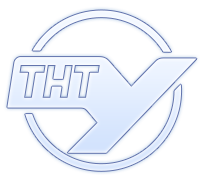|
|
|
Mathematical model of dynamic processes during frictional hardening of the cylindrical surfaces of parts
| Назва | Mathematical model of dynamic processes during frictional hardening of the cylindrical surfaces of parts |
| Назва англійською | Mathematical model of dynamic processes during frictional hardening of the cylindrical surfaces of parts |
| Автори | Volodymyr Gurey; Ihor Kuzio |
| Принадлежність | Lviv Polytechnic National University, Lviv, Ukraine |
| Бібліографічний опис | Mathematical model of dynamic processes during frictional hardening of the cylindrical surfaces of parts / Volodymyr Gurey; Ihor Kuzio // Scientific Journal of TNTU. — Tern.: TNTU, 2020. — Vol 100. — No 4. — P. 29–39. |
| Bibliographic description: | Gurey V.; Kuzio I. (2020) Mathematical model of dynamic processes during frictional hardening of the cylindrical surfaces of parts. Scientific Journal of TNTU (Tern.), vol 100, no 4, pp. 29–39. |
| УДК |
621.7 |
| Ключові слова |
friction treatment, nanocrystalline layer, mathematical model, surface hardening. |
|
The mathematical model of the elastic machine system has been developed, and describes the dynamic processes that occur during the frictional hardening of cylindrical surfaces of parts using a tool with transverse grooves on its working part, which forms a surface hardened metal layer with nanocrystalline structure. Transverse grooves on the working part of the tool increase the intensity of deformation of the surface layer in the contact area of the tool-part and the oscillating processes of the system. Differential equations that describe this process are based on Lagrange equations of the second kind. Based on the solution of the model’s the systems of equations, it is possible to determine the velocity and magnitude of displacement of a special device with autonomous drive of the tool, tool and treatment part during machining, reaction of device supports and spindle unit. |
| ISSN: | 2522-4433 |
| Перелік літератури |
-
Suslov A. G. Inzheneriya poverkhnosti detaley. M.: Mashinostroyeniye, 2008, 320 р. [Іn Russian].
-
Knauth P., Schoonman J. Nanocrystalline metals and oxides. Selected Properties and Applications. New York: Kluwer Academic Publisher, 2002, 242 p.
-
Koch C. C., Ovidko I. A., Seal S., Veprek S. Structural Nanocrystalline Materials. Fundamentals and Applications. Cambridge: Cambridge University Press, 2007, 364 p.
-
Waugh D. G., Lawrence J. Laser Surface Engineering. Processes and Applications. Cambridge: Woodhead Publishing, 2014, 718 p.
-
Montealegre M. A., Castro G., Rey P., Arias J. L., Vázquez P., González M. Surface treatment by laser technology. Contemporary Materials (I-1), 2010, 19–30 p.
-
Tian L. A Short Review on Mechanical Behavior of Nanocrystalline Materials. International Journal of Metallurgy and Metal Physics (2:008), 2017, 2–13 p.
-
Zhang Fangyuan, Duan Chunzheng, Sun Wei, Ju Kang. Effects of cutting conditions on the microstructure and residual stress of white and dark layers in cutting hardened steel. Journal of Materials Processing Tech. (266), 2019, 599–611 p.
-
Gurey V., Hurey I. The Effect of the Hardened Nanocrystalline Surface Layer on Durability of Guideways. Lecture Notes in Mechanical Engineering. Advanced Manufacturing Processes. Selected Papers from the Grabchenko’s International Conference on Advanced Manufacturing Processes (InterPartner-2019), September 10–13, 2019 (1), 2020, 63–72 p. (https://doi.org/10.1007/978-3-030-40724-7_7).
-
Gurey V., Hurey I. Influence of Surface Hardened Nanocrystalline Layers on the Resistance of Contact Fatigue Destruction. Lecture Notes in Mechanical Engineering. Advances in Design, Simulation and Manufacturing III. Proceedings of the 3rd International Conference on Design, Simulation, Manufacturing: The Innovation Exchange, DSMIE-2020, June 9–12, 2020 (1), 2020, 483–491 p.
(https://doi.org/10.1007.978-3-030-50794-7_47)
-
Havryliuk V., Pulka Ch., Mykhailyshyn V., Senchyshyn V., Vitaly Lyakhov. Mathematical model of the molten metal drop’s motion on the surface of a steel rotating disk. Scientific Journal of the Ternopil National Technical University. 3 (99), 2020, 86–92p. (https://doi.org/10.33108/visnyk_tntu2020.03.086).
-
Lutsiv I., Voloshyn V., Buhovets V. Shape forming system model of lathes two-carriage tool systems. Scientific Journal of the Ternopil National Technical University. 3 (91), 2018, 80–87 p. (https://doi.org/10.33108/visnyk_tntu2018.03.080).
-
Schmerr L. W. Engineering Dynamics 2.0. Cham: Springer Nature Switzerland, 2019, 707 p.
-
Panovko Ya. G. Vvedeniye v teoriyu mekhanicheskikh kolebaniy. Moskva: Nauka., 1991. [In Russian].
-
Bat' I.M., Dzhanelidze G.Y., Kel'zon A.S. Teoreticheskaya mekhanika v primerakh i zadachakh (izd. 10-ye, T. 2). SPb: Lan', 2013. [In Russian].
|
| References: |
-
Suslov A. G. Inzheneriya poverkhnosti detaley. M.: Mashinostroyeniye, 2008, 320 р. [Іn Russian].
-
Knauth P., Schoonman J. Nanocrystalline metals and oxides. Selected Properties and Applications. New York: Kluwer Academic Publisher, 2002, 242 p.
-
Koch C. C., Ovidko I. A., Seal S., Veprek S. Structural Nanocrystalline Materials. Fundamentals and Applications. Cambridge: Cambridge University Press, 2007, 364 p.
-
Waugh D. G., Lawrence J. Laser Surface Engineering. Processes and Applications. Cambridge: Woodhead Publishing, 2014, 718 p.
-
Montealegre M. A., Castro G., Rey P., Arias J. L., Vázquez P., González M. Surface treatment by laser technology. Contemporary Materials (I-1), 2010, 19–30 p.
-
Tian L. A Short Review on Mechanical Behavior of Nanocrystalline Materials. International Journal of Metallurgy and Metal Physics (2:008), 2017, 2–13 p.
-
Zhang Fangyuan, Duan Chunzheng, Sun Wei, Ju Kang. Effects of cutting conditions on the microstructure and residual stress of white and dark layers in cutting hardened steel. Journal of Materials Processing Tech. (266), 2019, 599–611 p.
-
Gurey V., Hurey I. The Effect of the Hardened Nanocrystalline Surface Layer on Durability of Guideways. Lecture Notes in Mechanical Engineering. Advanced Manufacturing Processes. Selected Papers from the Grabchenko’s International Conference on Advanced Manufacturing Processes (InterPartner-2019), September 10–13, 2019 (1), 2020, 63–72 p. (https://doi.org/10.1007/978-3-030-40724-7_7).
-
Gurey V., Hurey I. Influence of Surface Hardened Nanocrystalline Layers on the Resistance of Contact Fatigue Destruction. Lecture Notes in Mechanical Engineering. Advances in Design, Simulation and Manufacturing III. Proceedings of the 3rd International Conference on Design, Simulation, Manufacturing: The Innovation Exchange, DSMIE-2020, June 9–12, 2020 (1), 2020, 483–491 p.
(https://doi.org/10.1007.978-3-030-50794-7_47)
-
Havryliuk V., Pulka Ch., Mykhailyshyn V., Senchyshyn V., Vitaly Lyakhov. Mathematical model of the molten metal drop’s motion on the surface of a steel rotating disk. Scientific Journal of the Ternopil National Technical University. 3 (99), 2020, 86–92p. (https://doi.org/10.33108/visnyk_tntu2020.03.086).
-
Lutsiv I., Voloshyn V., Buhovets V. Shape forming system model of lathes two-carriage tool systems. Scientific Journal of the Ternopil National Technical University. 3 (91), 2018, 80–87 p. (https://doi.org/10.33108/visnyk_tntu2018.03.080).
-
Schmerr L. W. Engineering Dynamics 2.0. Cham: Springer Nature Switzerland, 2019, 707 p.
-
Panovko Ya. G. Vvedeniye v teoriyu mekhanicheskikh kolebaniy. Moskva: Nauka., 1991. [In Russian].
-
Bat' I.M., Dzhanelidze G.Y., Kel'zon A.S. Teoreticheskaya mekhanika v primerakh i zadachakh (izd. 10-ye, T. 2). SPb: Lan', 2013. [In Russian].
|
| Завантажити |  |
|




